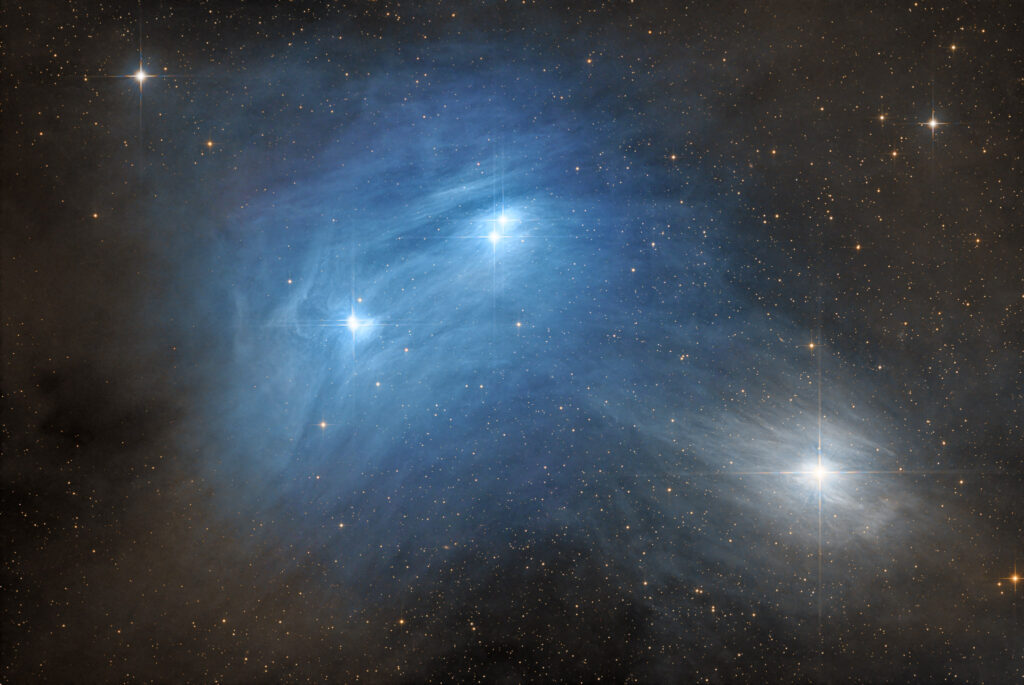
More on-site OSC data from the IAS Hakos observatory, the reflection nebula IC 4601 in the constellation Scorpius.
More details at Astrobin.
Continue reading
More on-site OSC data from the IAS Hakos observatory, the reflection nebula IC 4601 in the constellation Scorpius.
More details at Astrobin.
Continue reading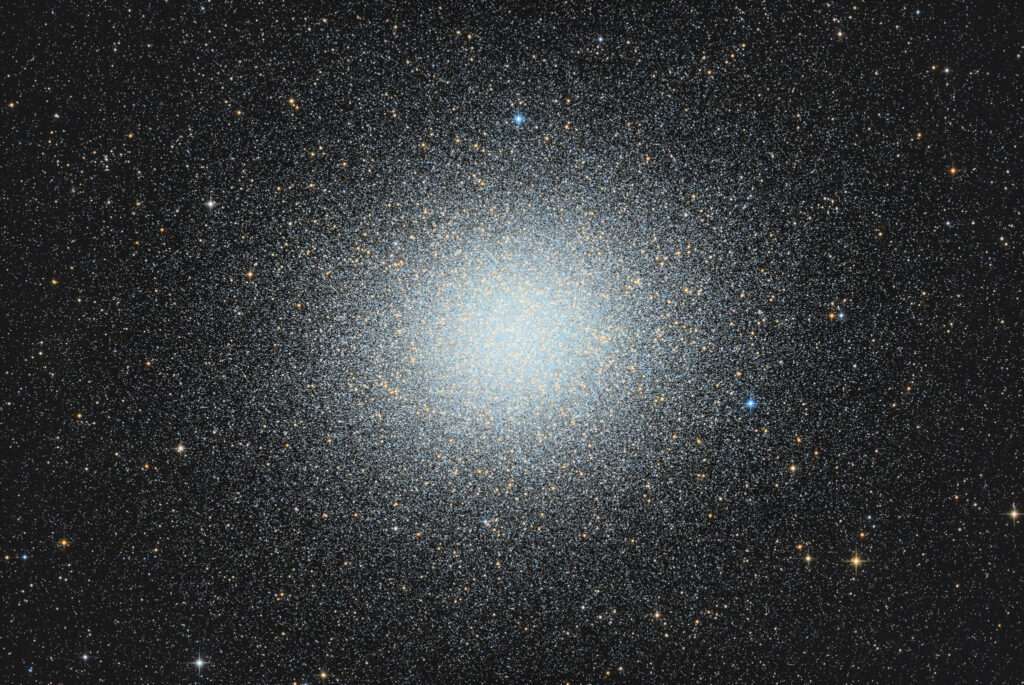
And one more. ;-) Of course, Omega Centauri aka NGC 5139 is a jewel in the southern sky and a go-to-target. So Omega Centauri’s photons were the “first light” for the ASI 2600 MC Duo on the AK3 astrograph, but I messed up focussing and had to redo it later.
All three globular clusters here in the blog were processed in PixInsight and Lightroom with the same color calibration and processing steps. Interestingly enough, their appearance varies quite a bit!
Also compare this with be previous image of Omega Centauri.
More details at Astrobin.
Continue reading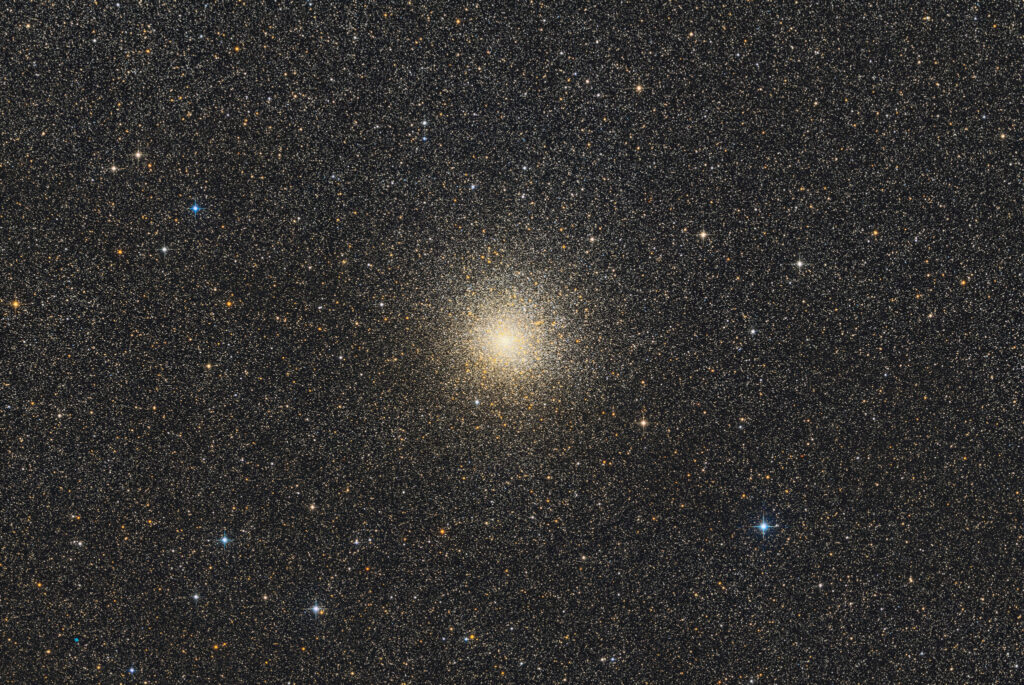
Another globular cluster, only about 9 degrees from M4 towards the constellation Ophiuchus, Messier 62 or NGC 6266 against the dense background star field of the Milky Way.
More details at Astrobin.
Continue reading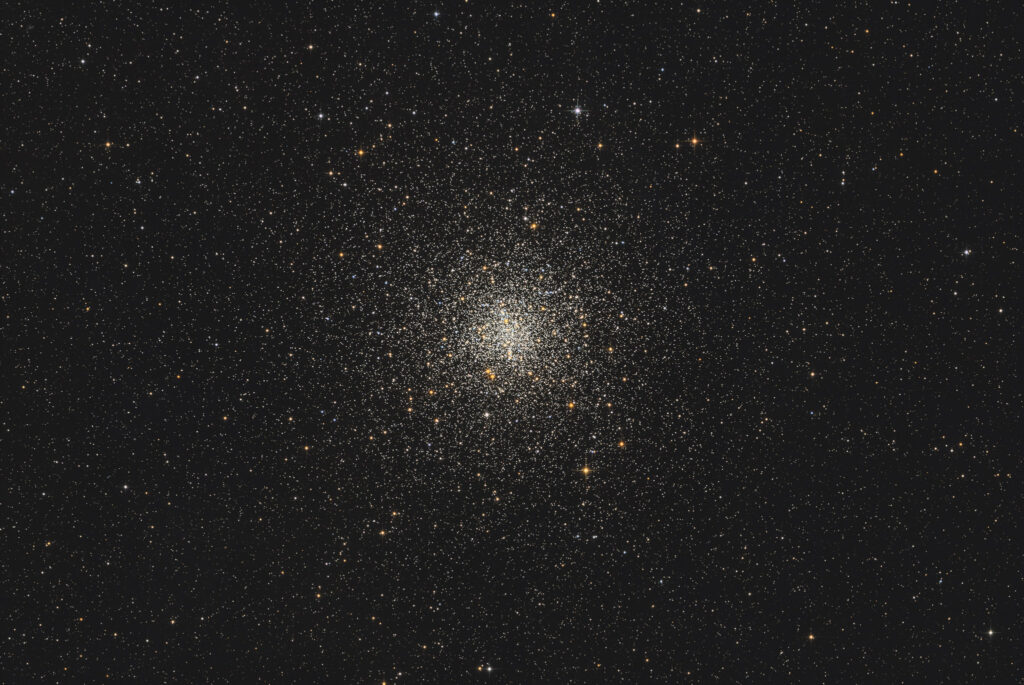
More processed OSC data with the ASI 2600 MC Duo and the IAS 20″ telescope AK3, featuring the globular cluster Messier 4 aka NGC 6121.
Notable change to my previously shown OSC workflow: I used “K2V star” as the white reference for SpectrophotometricColorCalibration. Standard “Average spiral galaxy” yielded stars, which were too “golden” for my taste, thus this bluer/colder rendition.
See also at Astrobin.
Continue reading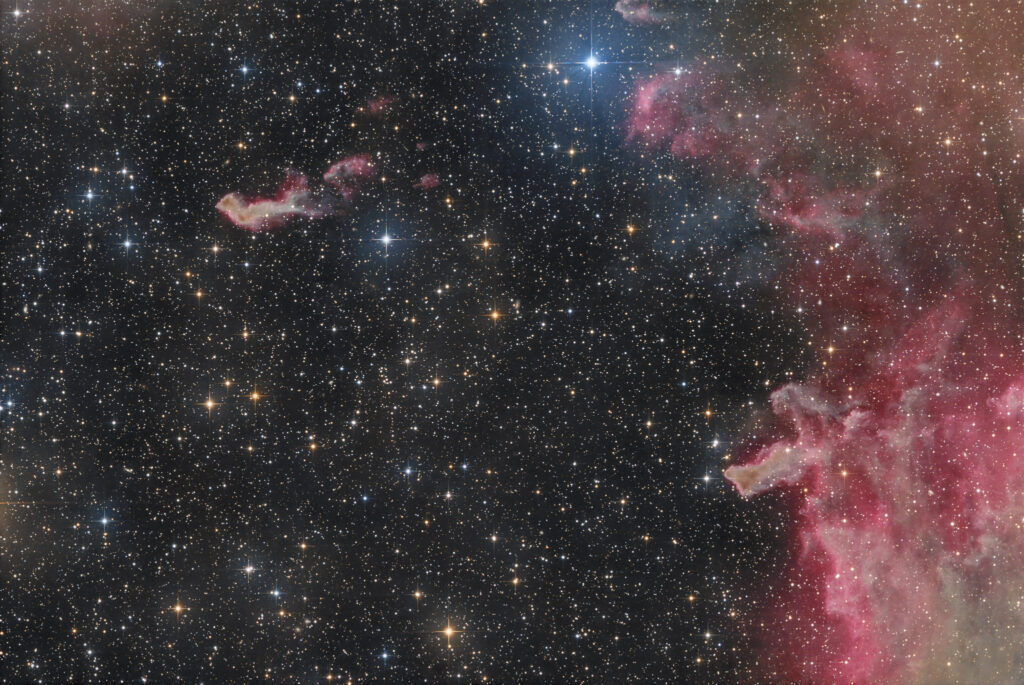
Continuing with the cometary globules, CG 8 and 9 were captured on-site at the IAS observatory Hakos with the 20″ Newtonian Astrograph AK3 and a new ASI 2600 MC Duo camera, which works quite nicely with this scope.
One more step on the long way to complete the CG catalog here. Most of the CGs are in Puppis, which meanwhile sets quite early in the southern hemisphere night.
Details at Astrobin.
Continue reading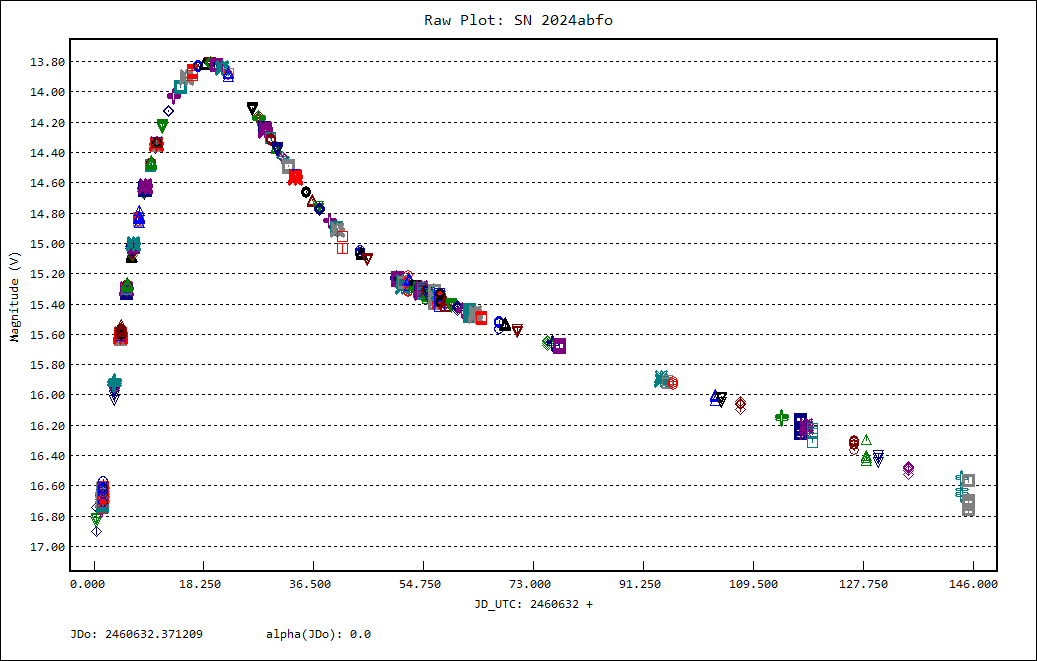
Supernova SN 2024abfo‘s brightness increased steadily from our first measurement at 16.91 mag on 17 Nov 2024 until peak brightness was reached during the night 06 Dec 2024, at 13.81 mag, more than fifteenfold. Meanwhile, brightness is back at 16.73 mag on 11 Apr 2025 (all values median mag of the dataset).
Discovery by ATLAS (ATLAS-STH_ATLAS-03) on 15 Nov 2024 reported a brightness of 16.79 mag with filter “orange-ATLAS”, measurements by Pan-STARRS (PS1_GPC1) two days later on 17 Nov 2024 reported 16.63 mag with filter “i-P1”.
Our amateur measurement with 137 datasets in total now cover a period of 146 days, quite an achievement I’d say. ;-)
Due to using an L filter (Baader UV/IR cut) and not a V band filter, the measurements here overestimate the brightness by approx. 0.2 mag. With almost full moon and low altitude (meanwhile NGC 1493 is setting quite early), the last two measurement have a higher uncertainty, up to 0.08 mag.
IAS – Internationale Amateursternwarte e.V. – Hakos Observatory, Namibia
IAS remote telescope “Dieter”
Data aquisition by Martin Junius and Stephan Messner.
Technical details see previous post. Photometry measurements with L filter.
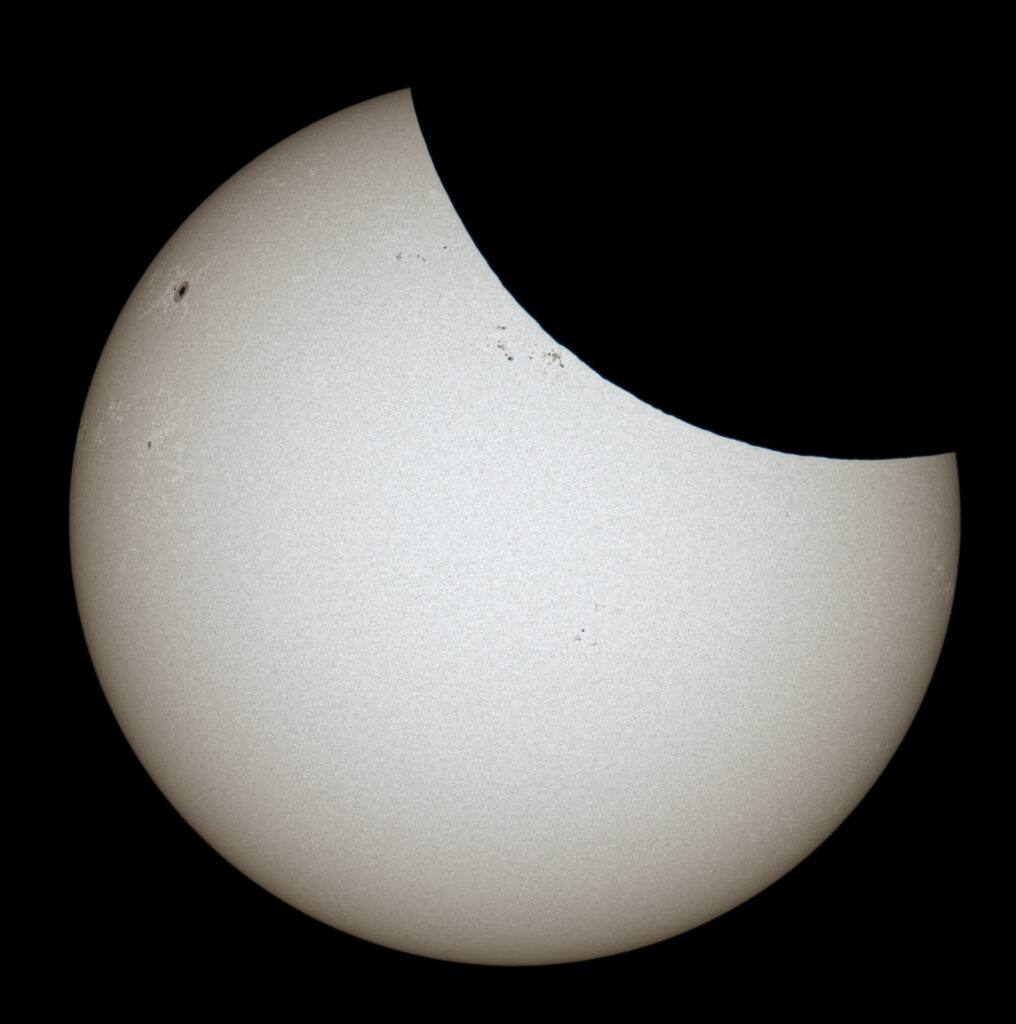
Scattered clouds, but good views of the partial solar eclipse in-between at home in Cologne, Germany.
Telescope: Skywatcher Esprit 100/550 ED, Televue 2x
Camera: ASI2600MC Duo
Filter: Baader ASTF 100
Mount: Skywatcher AZ EQ6 GT
Image acquisition: SharpCap, 25 of 250 frames, 7 ms exposure at gain 0
Image processing: PixInsight, Lightroom

More strange creatures: lonely cometary globule CG 7 plowing through the dust clouds of Vela, as it seems. Maybe looking for the small planetary nebula NGC 2792? (Can you find it? If not, see the annotated image below.)
Also included in my growing catalog of CGs here.
More details at Astrobin.
Continue reading
Old data revisited: 3 years ago, back in 2022, I collected a whopping 38 hours of data on Messier 81 and Messier 82, a nice field of view with lots of smaller galaxies for my Esprit 100ED APO at home. But I never managed to get to a satisfying rendition up until now. The new NoiseXTerminator version AI3 was released at just about the right time. Under suburban Bortle 5 skies, this massive amount of exposure time is really necessary to bring out the dust streaks.
More details at Astrobin.
Continue reading
Still on the hunt for cometary globules, here’s CG5 trying to escape the evil clouds with tendrils already stretching in its direction … ;-)
Meanwhile, I created an extra page in the gallery with some information on CGs and the related astrophotography so far.
More details at Astrobin, as always.
Continue reading